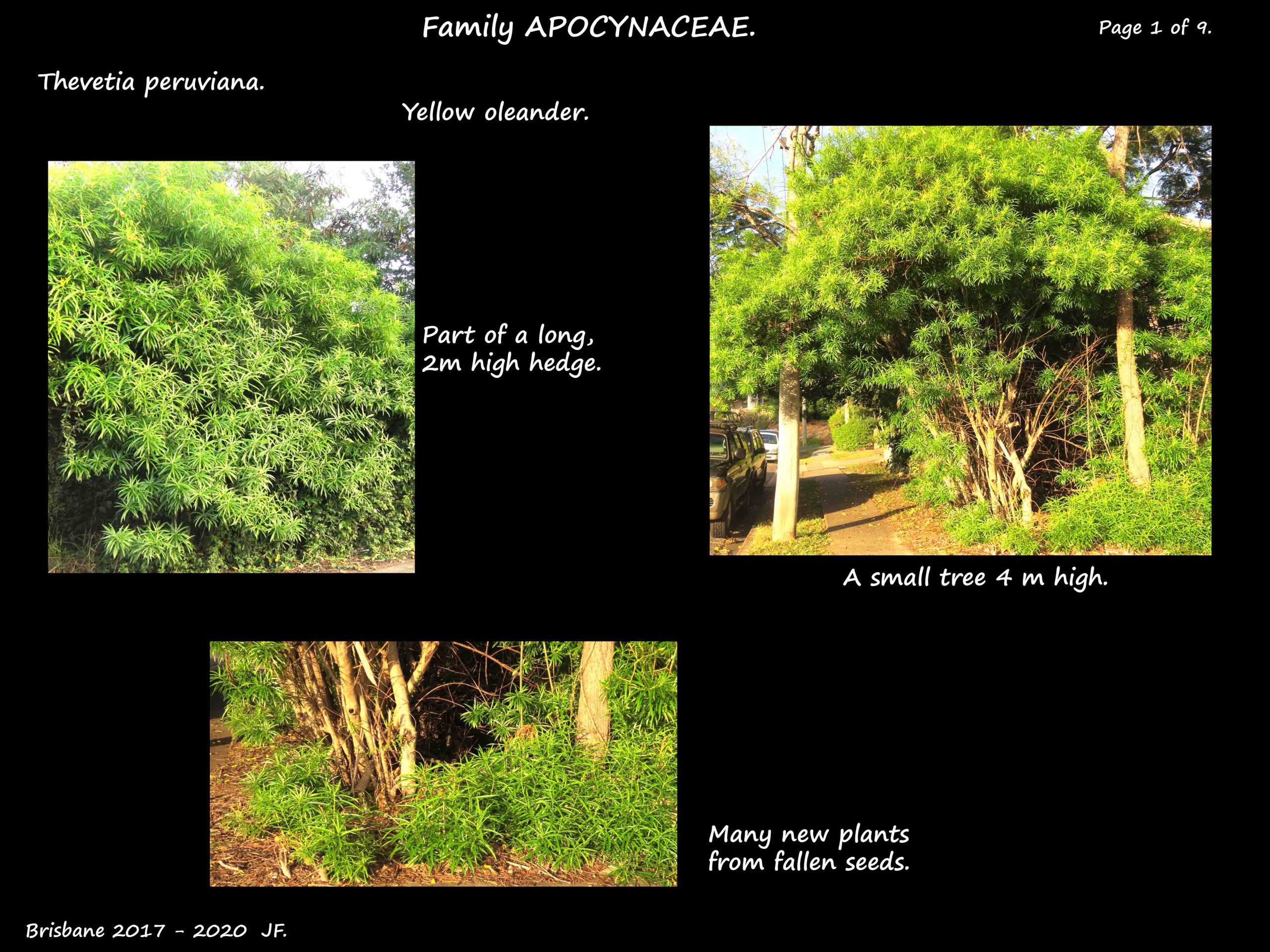Thevetia peruviana.
Family Apocynaceae.
There are 7 to 9 species of Thevetia with T. peruviana naturalised in S. E. Queensland.
It is also seen as Cascabela peruviana; Cerbera peruviana or C. thevetia; and Thevetia thevetia or T. nerifolia.
The Yellow Oleander is an environmental weed in Queensland but still widely cultivated.
Evergreen, much-branched shrubs to 4 m high or occasionally small trees.
All parts contain a white latex.
Young stems are green and older ones are grey to brown.
The leaves, alternately arranged in a spiral, may be concentrated at the stem ends.
On petioles a few mms long, the linear blades are up to 15 cm long and 1.5 cm wide.
The hairless blades are a shiny green above and paler underneath.
The tips are pointed, the edges may curl under and the midrib is prominent on the upper surface.
There are small, narrowly triangular glands in the axils and between the petiole bases.
Inflorescences are a terminal cluster of flowers.
Flowers are on a petiole with a small bracteole at the base.
Flowers, up to 6 to 7 cm long, have parts in 5’s and they can flower all year.
The narrow sepals, about 1 cm long, are fused at the base.
The flowers are tubular and never open widely.
The petal bases are fused into a tube up to 3 cm long.
The lower part is straight and narrow then it widens slightly.
The twisted, overlapping lobes are up to about 4 cm long.
Most are a bright yellow but some, on the same shrub, are orange.
A rare cultivar has white flowers.
At the top of the narrow part of the corolla tube are 5 hairy processes (scales) that hide the anthers.
The stamens, on short filaments, are inserted just below the scales.
The small, ovoid anthers lie close to, but are not adherent to, the style head.
There is a short appendage from the connective tissue between the anther sacs.
Below each stamen is a narrow, vertical, semi-circular projection that touches the style head.<br
Around the lower part of these are white hairs.
The ovary, of 2 fused carpels, has 2 locules.
There is a single style with a large, conical, bilobed style head.
There is a yellow, annular nectary ring around the ovary.
The fruit are drupes that are initially green then mature to a shiny black then shrivel.
They have a ridge across the centre.
Up to 3 cm long and 5 cm wide they usually have only 1 seed in a hard coat.
J.F.










